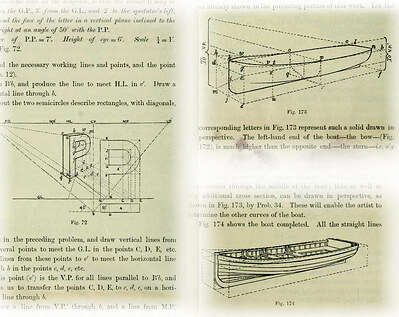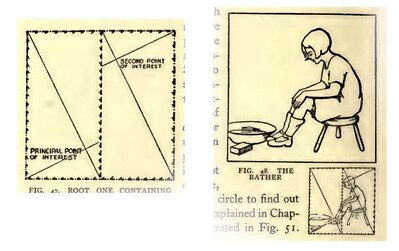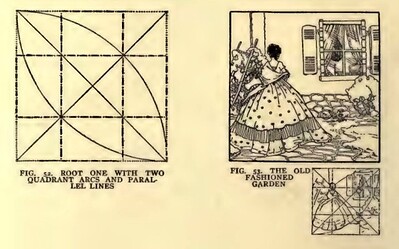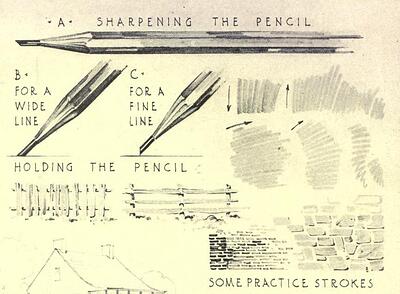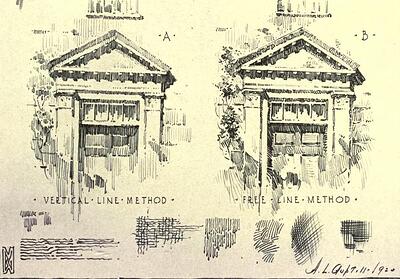I will indicate some works in the public domain, that is, those whose copyright has expired and, according to the law, can be freely distributed. To access the books, just click on the title of each one, below. When you open the page, scroll to the bottom of it and you will see a list of file formats, choose one of them to download.
• The Theory and Practice of Perspective - *George Adolphus Storey •*
The author teaches, in detail, perspective applied to objects. There is little about the perspective of the human figure; on the other hand, you will find some useful tips. He shows, for example, a simple way to put a triangle in perspective (1), using auxiliary lines to facilitate the construction. In the case of an object in three dimensions (2), you draw a “box” and insert your object inside it:
The author also teaches how to trace projected shadows (not to be confused with shading). This part is more difficult, ideally you only get it after you have a reasonable knowledge of perspective. Here’s a way to trace the shadow cast by a balcony (3) and a portal (4):
• Complete Perspective Course - J. Humphrey Spanton •
This book seems to be more about perspective in geometric design. A cool technique shown in it is building letters in perspective (below left). On the right are illustrated the stages of drawing a boat, in perspective. Note that the author first drew a general outline of the vessel, to facilitate the task… and only then added the final lines and details:


